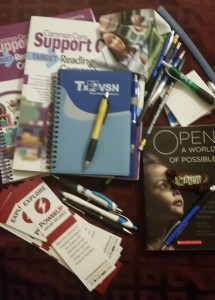Regarding #iNACOL14 Again
I’m like the world’s least timely blogger meaning if I have good idea to blog about, it will take me weeks to actually sit and write and of course, who cares anymore? Two weeks ago I returned from the iNACOL Symposium for Online and Blended Learning; this post is part of a reflection I’m sending to a couple of people as part of the KPBSD Blended Learning cohort as well as a university for a CEU.
The thing is, these thoughts are timeless. I could post this any time of the year, I bet. Thankfully, people are asking these questions all the time; at some point, we’ll get to ask new questions.
——
The most significant session I attended, though, was not on the schedule. By Wednesday, the Twitter backchannel asked, why are we attending a blended learning conference that doesn’t use blended learning? Why are we always subjected to sit-and-get at conferences where we are being told specifically, do not teach children this way? Through this lament, the iNACOL Edcamp formed, an “unconference” session of fifteen connected educators (because the session was coordinated solely through Twitter or word of mouth) gathered to discuss the unspoken, underlying themes of the conference: are we truly at a point of individualizing learning for students? Why do we hear the same rally call from keynote speakers about individualizing education yet no one addresses the lack of a solid virtual pedagogy that engages the learner beyond rote learning? Are the innovations of private and charter schools truly sustainable in the public school setting? How do we change teacher professional development to professional learning, both for pre-service and currently employed teachers?
These are questions that should resonate with every educator (though only a few of us in the group were actually classroom teachers, and indeed, it seemed that brick-and-mortar teachers were a minority at the conference) and with every instructional decision in the classroom. So I bring away from the conference a reconnection to the ideal of individualized learning; I teach special education, I know what this means. But now, it is my charge to figure how to do this in my classroom and with my students through thoughtful use of technology and teaching, to be more than just a technology-rich classroom but one that draws from all over the globe to transform students into learners.

